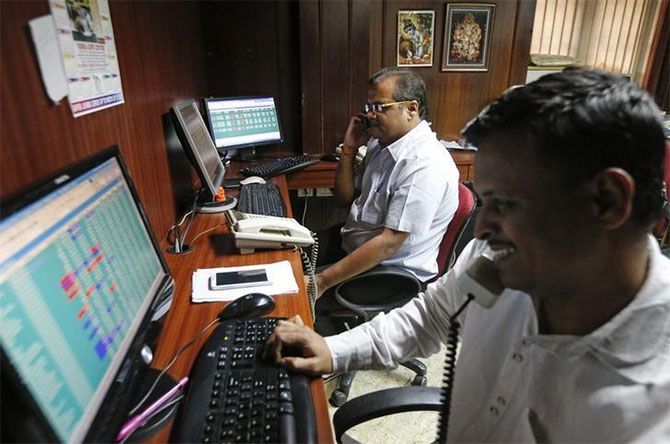Trading such scenarios takes discipline, advises Devangshu Datta.

Foreign Portfolio Investors (FPIs) sold heavily in November and December (until December 26), with net sales amounting to over Rs 40,500 crore of debt and over Rs 23,000 crore of equity.
Domestic institutions (DIIs) were active on the other side.
In November, DIIs logged Rs 18,700 crore of net equity buying and they bought over Rs 4,000 crore equity in December as well.
The FPI debt sales have also been matched by DII buying.
DIIs bid up government securities once bank deposits surged.
Bond yields fell sharply until late November when the Reserve Bank of India took various measures to sterilise excess liquidity. G-Sec yields have risen in December.
The 10-year G-Sec was down to 6.18% in late November. It is at about 6.53% now, which is still much lower than the 7.46% logged in early April.
December has stayed low-volume, while traders wait for more news triggers.
The correction has been caused partially by the Federal Reserve hiking the US policy rate and by India's demonetisation.
The macro data has been gloomy, but on expected lines.
Traders find life more difficult when volumes are low.
Impact cost rises as volumes drop.
In smaller stocks, prices can 'semi-freeze.'
If there is very low trading volume, the price may not move at all for several sessions.
Conversely, a single big trade can move prices a long way.
Systematic traders using trend following methods can end up needing to seriously modify their methods.
A trend follower normally uses some breakout/breakdown signal as an entry trigger.
For example, the trend follower may enter on a 20-session high (buying) or 20-session low (short).
Any sensible trend follower will also set stop losses, often based on daily volatility.
Low volume situations are prone to whipsaws, where the trigger is struck but the trend does not happen because the price reverts after one big trade.
In such cases, volumes dry up again.
Stops set on the basis of 'average' volatility (the average high-low range per session for the past N sessions) are also often hit by a single big trade because that causes a price spike.
Trading such scenarios takes discipline.
- First, cut down on assets you are willing to trade -- don't trade an asset with really low volume.
- Second, cut position size.
- Third, be prepared to break up trades. If you would normally trade say 4 lots, cut it down to two, if volumes have fallen. Also consider trading those two lots in two tranches instead of at one go.
Be prepared for a pattern where long periods of low volatility are interspersed by sudden violent moves. This is common.
You may want to increase the magnitude of trigger signals to cut down whipsaws.
For example, if you normally trade on 20 session high/lows, consider switching to trading 40 session or 55 session high/lows.
Increase the stop-loss as well.
Apart from resetting triggers and stops, consider something radical.
It often makes sense to play for reversions, rather than breakouts, in low volume situations.
When you get a trigger signal, assume that a trend will not be established.
Therefore, sell on a high signal and buy on a low signal.
A reversion trade usually gives less profits.
But it has a much higher strike rate than trend following under low-volume conditions.
If the whipsaw pattern occurs with one big trade followed by low volumes and price reversion, a reversion trading strategy will work.
The other advantage of playing for reversion is that it is easy to set stop-losses.
If the price does not revert and volumes stay up, it is likely to be a sustainable breakout.
Photograph: Shailesh Andrade/Reuters.












 © 2025
© 2025